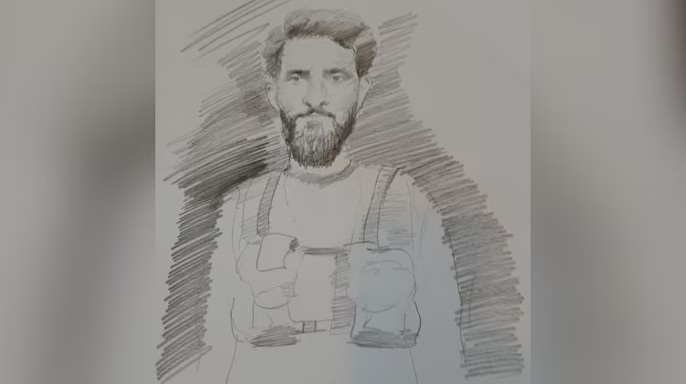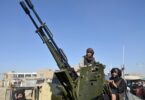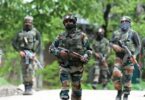Hashim Musa has been identified as the mastermind behind the terror attack in Pahalgam on 22 April 2022.
According to reports, Musa is an elite para-commando from Pakistan special forces like Special Service Group (SSG) to LeT from Pakistan, who has aided terror activities in Jammu and Kashmir.
Musa is supposedly in his late 20s and is believed to have infiltrated India through the Kathua and Samba sectors in 2023. He is reported to have been active in the Dera Ki Gali area of Rajouri-Poonch, where the Lashkar-e-Taiba (LeT) module he was handling is suspected of orchestrating several attacks on security forces in 2024. The NIA officials have confirmed to his direct involvement in at least three attacks on security forces and non-locals.
According to officials, Musa’s military background came to light upon the interrogation of 15 Kashmiri over ground workers (OGWs), who were suspected for aiding terrorists with logistics and reconnaissance in the attack. On basis of the interrogation, it was revealed that the attack in October of 2024 in Gagangir, Ganderbal, which claimed the lives of six non-locals and a doctor and the other at Buta Pathri, Baramulla, which killed two army personnel and two army porters were also orchestrated on behest of ISI.

Security agencies hold Lashkar-e-Taiba chief Hafeez Saeed and his deputy Saifullah Kasurib also responsible for the Pahalgam attack.
Operation has been launched to track Moosa in Jammu and Kashmir, who is believed to be absconding in the region. The J&K police have announced a bounty of Rs 20 lakh for information on Hashim Moosa.
It is imperative to mention that Pakistan’s age old modus operandi has always been to utilize various militant groups by providing aid financially or logistically or through training against its enemies. This provides the necessary deniability to the cash strapped Pakistan which resorts to proxy wars utilizing terrorists trained by its military or intelligence under the banner of a terrorist organization. However, over the years, the garb of deniability continues to be lifted.
It is evident that majority of the anti-India local Kashmiri outfits have maintained or are affiliated with larger terror networks such as the Laskhar-e-Tayiba (LeT), Jaish-e-Mohammed (JeM), Hizb-ul-Mujahideen (HM), Al-Qaeda, etc. In light of their affiliation, the newer or smaller groups, like The Resistance Force (TRF), are consistently dependent on the donorship of already established groups. And in turn several larger groups work at tandem with ISI.
In order to be indispensable, while evading the hunt from nations issuing the capture of various individuals or groups, several such entities resort to making deals with ISI.
This is also one of the reasons why a spent shell-like Dawood proved to be effective to the ISI agency. In order to be indispensable to ISI, he was expected to fund ISI funded terror organizations while he received the protection from the agency in exchange. This arrangement served two purposes, firstly it provided a front for ISI`s dealings with terror outfits and secondly, the funds required to support the outfits covertly.
For years, ISI denied Dawood`s presence in Pakistan. However, Dawood`s presence in Karachi was confirmed through an official Pakistani government document (S.R.O document), declaring the order of asset freeze, travel ban and arms embargo on Dawood`s ventures.
Since then, D company proved to be a beneficial intermediary to ISI and the evidence of their joint collusion is an open secret.
In 2002, evidence of D company funding the Lashkar e-Taiba (LeT) for their orchestrated terror activities in Gujarat emerged. Many donations in name of front companies for LeT were made in form of “zakat” (charity). In collaboration with ISI, Dawood and Tiger Memon extended their support to a militant group Jammu and Kashmir Islamic Front (JKIF).
D company has been exposed for providing the seed money to a Bangladeshi terror group called Shahdat-e-Al-Hikma, whose operative was arrested by NIA for a bombing in Khagragarh years back.
It is known that there are many terrorist organizations functioning in and from Pakistan, are derived from their sectarian background (Ahl-e-Hadith, Deobandi, Jamaat-e-Islami etc.), and their areas of operation are Afghanistan, India and Pakistan. It typically takes eighteen months for ‘Mujahideen’ to become fully functional.
“There are six stages to jihad training before a mujahid is deployed. The first stage, Tasis, is the indoctrination period, during which no military skills are taught. This is a period in which religious and sectarian fervour is instilled in the trainee, and the phase generally lasts one month. For example, Lashkar-e-Taiba will use this stage to convert recruits to Alh-e-Hadith teachings. Next is Al Ra’ad, a three-month period that continues the indoctrination period but also includes the trainees’ introduction to military training. At the beginning of this stage, some groups like to take stock of their recruits and administer mental and physical tests to make sure the recruit is fit for a life of jihad. After these four months of spiritual conditioning and an introduction to light military activities, a six-month period of guerrilla training begins. Upon completion of this phase, Mujahideen can technically be put in the field, but only after writing their will and giving it over to the Ameer (a title of respect or nobility, usually meaning “commander”) of the camp.
However, should the trainee require more specialized instruction, he will be sent on to Doshka and Jandla. The seven to ten-day Doshka training teaches the recruit to use handheld weapons. Not all Mujahideen go through the nine-month Jandla phase, which is considered the most difficult. During this training, the mujahid learns how to use automatic arms and to craft explosives. Thus far, only the facilities linked to Lashkar-e-Taiba, Hizb-ul-Mujahideen, and Harkat-ul-Jihad-i-Islami have the resources to conduct this training, but other groups often use these facilities to train their own Mujahideen.
The final two stages often depend on resources and the necessity of certain operations. For example, only the leadership of a jihadi group engages in Domela training, which teaches the handling of shoulder-fired weapons. Zakazak is also a rare form of training, because it involves familiarization with tanks, canons, and other heavy weaponry, to which many groups do not have access”. – Amir Rana, Director of Pakistan Institute of Peace Studies, Authored A-Z of Jihadi Organizations in Pakistan.
LeT is an Ahl-e-Hadith group operating in Pakistan, targeting Kashmir. It is regarded as the militant wing of Markaz Dawa-ul-Irshad, which was formed in the mid-to late 1980s by Hafiz Muhammad Saeed, Zafar Iqbal, and Abdullah Azzam.
LeT comprises of members from Pakistan, Jammu and Kashmir, Pakistan-occupied Jammu and Kashmir (POJK) and veterans of the Afghan war. The outfit maintains 2,200 offices nationwide and many camps to launch fighters across the Line of Control (LoC).
In December 2008, U.S. intelligence officials stated that ISI had provided intelligence assistance and protection to LeT. By November 2008, it was Lashkar-e-Taiba that orchestrated the terrorist attacks in Mumbai. Ajmal Amir Kasab, the only surviving terrorist, confessed to the attacks being executed by the LeT. It is widely known that LeT receives funds from Muslim charities in Pakistan and Kashmir besides the Pakistani diaspora settled in the Gulf States, the US and the United Kingdom.
It was inferred that ISI had tried to replicate and transplant the similar approach of the anti-Soviet Afghan campaign in Kashmir, provoking the youth to become Mujahideen to wage war against India.
Over the years, as many as 100 training camps have been identified in POJK. According to reports, the responsibility for these terror training camps comes under two sub divisional branches of the ISI namely Joint Intelligence Miscellaneous (JIM) and Joint Intelligence North (JIN).
As per reports, the annual expenditure of ISI towards the terrorist organizations runs between 125-250 million USD, “covering salaries, cash incentives for high-risk operations and retainers for guides, porters and informers”. More on the diversified approach by ISI towards funding and establishing terrorist organizations can be read here: https://www.thestrategicperspective.org/articles/aqis-the-reemerging-threat-in-the-indian-subcontinent/.
The ISI has also tried turn its terror driven objective in Kashmir to that of a movement carried by foreign fighters on basis of Pan-Islamic ideologies. Apart from this, ISI has been supplying arms to insurgents in North-East India, supporting pro-Khalistan terrorist groups in Punjab and actively printing and supplying counterfeit Indian currency notes.
Additionally, the statements by Pakistani defence minister Khwaja Asif on Sky TV further confirmed Pakistan’s long history of terror funding as he confidently admitted to Pakistan doing the “dirty work” albeit on behalf of US or may be show its strong allegiance to China by throwing US under the bus, while washing its own hands of the direct connection with the “dirty deeds”.










